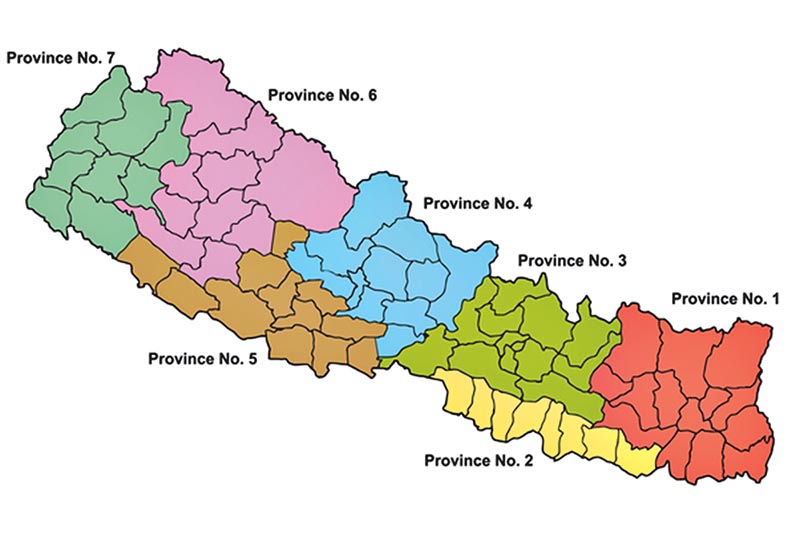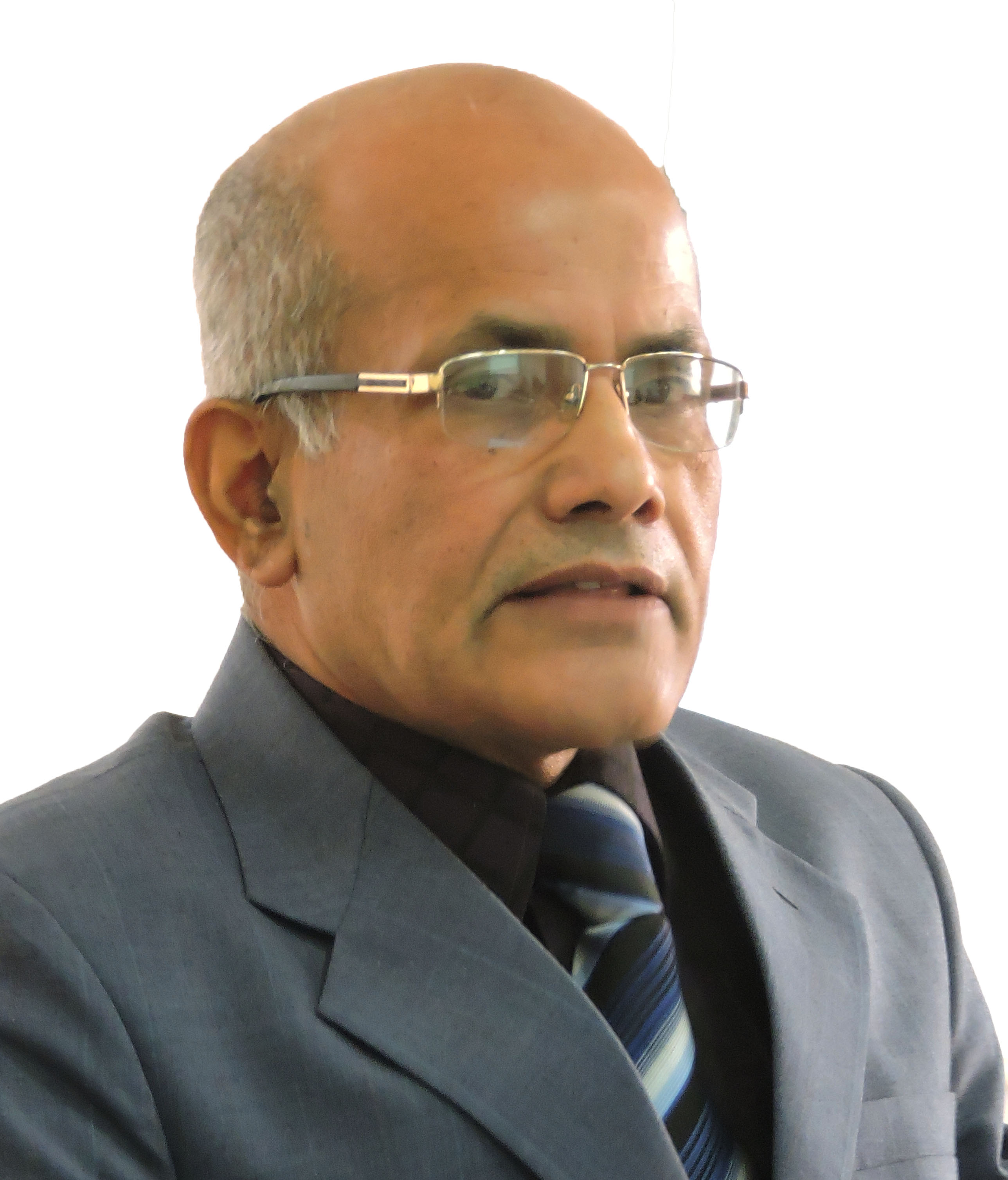In Nepal, the coalition government of the Federal Socialist Party Nepal (FSPN) and the Rastriya Janata Party Nepal (RJPN) in Province 2 could not garner the required number of votes in the Provincial Assembly on the name of the province and its capital on March 17, 2020. As such, the future of giving the name and fixing capital of Province 2 has become uncertain.
Though too late, the FSPN and the RJPN had registered proposal for naming the Province 2 as ‘Madhesh.’ On the other hand, the Communist Party of Nepal (CPN) proposed the name ‘Janaki’ for this province; while the Nepali Congress (NC) wanted Mithila-Bhojpura as its name. One dissident Congress member proposed the name ‘Madhya Madhesh’ for this province.
In the 107-member Provincial Assembly, 60 members voted for Madhesh Pradesh followed by Madhya Madhesh Pradesh (42), Janaki Pradesh (37) and Mithila-Bhojpura Pradesh (28). Similarly, concerning the voting on the name of permanent capital of Province 2, 52 members of the Provincial Assembly voted in support of Janakpur while those in favour of Birgunj and other places were far less.
In the federal constitution promulgated on September 20, 2015, each province is authorized to choose its name and fix its capital with a two-thirds majority in the concerned Provincial Assembly. Accordingly, in Province 2 an effort was made by the ruling parties after two years to settle the name of the province along with its capital. But this initiative ended in fiasco because of lack of support from a two-thirds majority of the Provincial Assembly members.
Of the seven provinces in Nepal, three provinces including Gandaki, Karnali and Sudurpaschimanchal have already fixed their names and capitals. Of the remaining four provinces, Province 2 and Province 3 are still without their names and permanent capitals. In the case of Province 1, Biratnagar has been selected as its capital, but the elected members have not yet been able to decide the name to the province as yet.
Unfortunately, there has been a lack of political will on the part of the coalition government to give the province a name and fix its capital. It was only after so much of hue and cry by the civil society and the Provincial Assembly members that the government constituted a three-member Sambad Tatha Sujhao Ayog (Dialogue and Suggestion Commission) on October 28, 2018, to suggest the name of the province as well as its permanent capital. In this regard, the Ayog consulted different groups of people in all the eight districts of the province, namely Parsa, Bara, Rautahat, Sarlahi, Mahottari, Dhanusha, Siraha and Saptari. The Commission prepared its report based on the public opinion well within the allotted time limit of three-and-half months. Nevertheless, the Provincial government did not receive the report on time. It was only in the first week of May 2019 that it received the report, which is not yet made public for reasons not known.
Thus, there was a delay of more than two years to register the proposal regarding the name and capital of Province 2 in the Provincial Assembly. Such a delay cost the province a lot both in socio-political and economic terms.
It may be recalled that all the three Madhesh movements were launched on the name of the Madhesh issues in which several people sacrificed their life. Lack of initiative on the part of the provincial government to give a due name to the Province exhibited that it had least respect for the martyrs and all those who suffered for the cause of Madhesh.
Besides, the inability on the part of the Provincial government to fix permanent capital has been delaying many of the development activities, including the construction of offices and residences of the Ministries, Chief Minister, Provincial Assembly members and the government officials. On the one hand, the government over last two years has not even been able to spend much of the budget that is allotted to it by the federal government and on the other hand, it is failing to undertake some of these development activities.
The delay in naming the province and its capital is also eroding people’s confidence in the Madhesh-based parties and more so in the federal democratic structure of the country. As federalism was the main demand of the Madheshis, the failure on the part of the Provincial government to give the name to the province and its capital also means that it does not have the needed competence to move the idea of federalism forward.
Also, the government failed to pursue the opposition parties, including the CPN and the NC to get their support on the name of the Province. It also remains a mystery as to why the government could not at least get the name of the provincial capital passed through the Provincial Assembly when there was near-consensus developed among all the political parties on this issue.
Despite the lack of initiative on the part of the government regarding the name of the Province and its capital, the voting pattern in the Provincial Assembly shows that the largest number of voters were in favour of making Janakpur as the permanent capital in the same way as they wanted Madhesh to be the name of the province. As per the democratic norms, the Madhesh should have been declared the name of the province with Janakpur as its capital on the majoritarian principle. But it could not happen only due to the constitutional barrier, which demands the support of at least two-thirds i.e. 72 members in the Provincial Assembly of 107 members for this cause. Now in the changed context, the chances are that even the political parties in opposition may try to exploit the situation and emerge as an alternative force in giving the due name to the province and its capital. Only time will show how the situation develops. But it will be in the larger interest of the people of Province 2 if it gets its name and permanent capital based on the age-old cultural and religious traditions for which it is famous for.
(The paper is the author’s individual scholastic articulation. The author certifies that the article/paper is original in content, unpublished and it has not been submitted for publication/web upload elsewhere, and that the facts and figures quoted are duly referenced, as needed, and are believed to be correct). (The paper does not necessarily represent the organisational stance... More >>
Image Source: https://thehimalayantimes.com/wp-content/uploads/2019/01/Nepal-Provinces-Federalism-Federal-map-of-Nepal.jpg











Post new comment